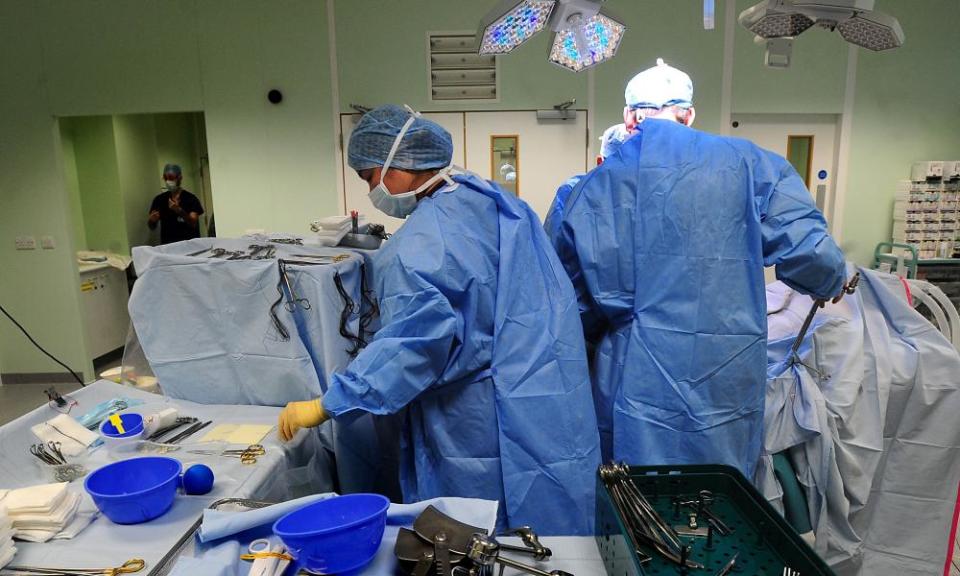Five charts that show how the NHS is under acute pressure

The NHS is caring for a rising number of Covid patients at the same time as it deals with a backlog of more than 5.7 million patients in England alone.
The head of the NHS Confederation warned the government this week that it must implement “plan B” winter measures – such as mask wearing and vaccine passports – to help deal with this accumulation of demand.
The warning came amid sharply rising Covid infections in recent weeks, with the UK recording the highest number of daily Covid deaths in seven months.
Here are five charts from the latest NHS data that show how demand on the health service is growing as we approach winter.
NHS bed occupancy is at the highest level in a year
Hospitals are more full than at any time since November 2020, according to Guardian analysis. This is the point at which NHS England started publishing full daily bed occupancy data in relation to Covid.
In the seven days to 19 October, 92.9% of beds were occupied across all trusts in England – but close to half of 126 acute trusts across England averaged 95% capacity or more in the same week (85% occupancy is the accepted international standard and 95% is seen by medics as dangerously high).
Just 5.6% of beds were occupied by Covid patients in the same week (this figure reached 33% in late January). However, overall bed occupancy is as high as it has been in almost a year with average bed occupancy increasing almost interrupted for more than two weeks now.
Covid hospital patients are creeping up
One cause of the pressure on the NHS is the fact that the number of Covid patients in hospital is slowly creeping up.
The number of Covid patients in UK hospitals has remained above 5,000 since the end of July. This extended period of time in which the NHS has had to deal with a large number of Covid patients means that the NHS has not been granted a reprieve for four months now – and many are worried about what lies ahead with winter approaching.
default
Only three in five A&E patients are seen within four hours
The proportion of people seen within four hours is slipping. NHS England data shows that just 64% of patients in major A&Es were seen within four hours in September – a record low since the NHS started publishing this data in November 2010.
The equivalent figure for September last year was 81.7%, while it stood at 77% in September 2019, before the pandemic.
Record number of people waiting for treatment
The monthly NHS England figures show yet another climb in the number of patients waiting for treatment, which stood at 5,715,698 in August. Before the pandemic, in January 2020, it stood at 4,417,420 – marking a 29.4% increase.
The median wait has also grown slightly to 11.5 weeks in August (from 10.9 last month), as has the proportion seen within 18 weeks (67.6%) compared with 68.3% in July. The number waiting over a year has gone down marginally from 293,102 in July to 292,138 in August.
GPs have seen more people in 2021 compared with the last two years
GPs have seen 196.8 million people to date this year. That’s up from 175.4 million in the first eight months of 2020 and 175.5 million in the first eight months of 2019.
This marks a 12.1% increase compared with 2019.

 Yahoo News
Yahoo News 